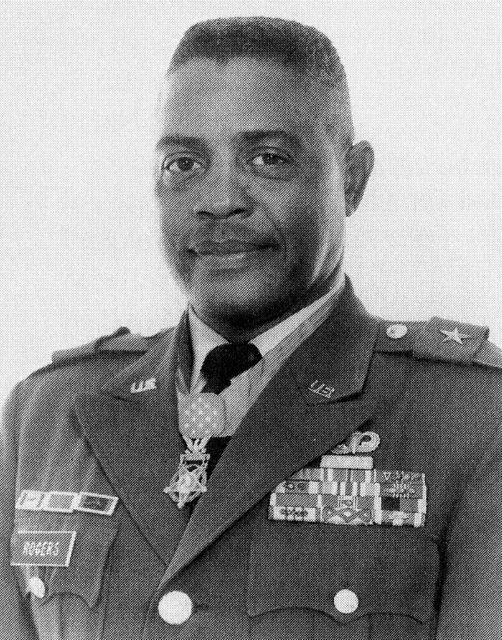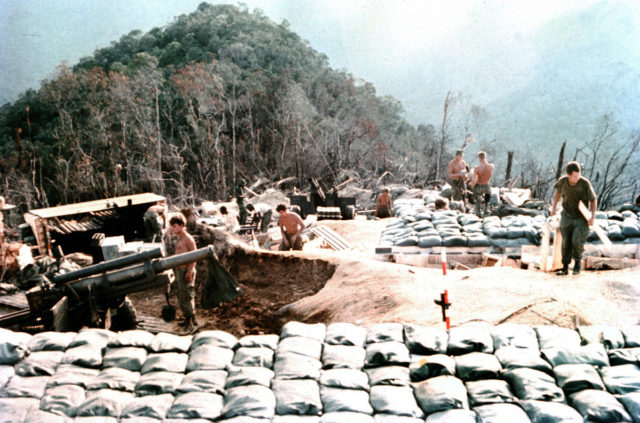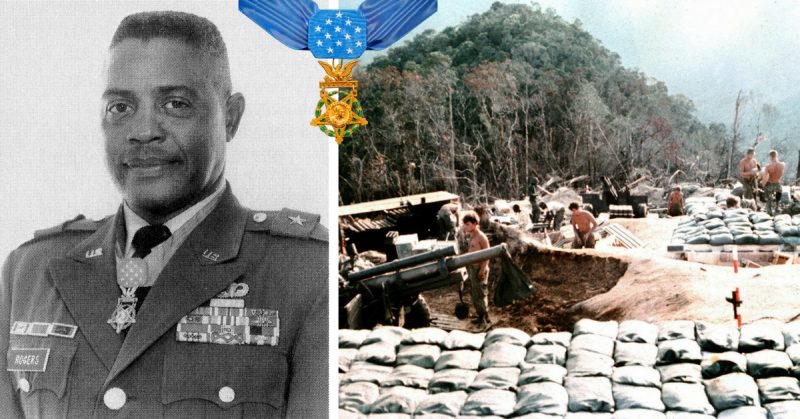In warfare, it is often the lower ranking enlisted men or junior officers that find themselves in a position to be awarded the nation’s highest military honor. Higher ranking commanders tend to stay well away from the front line, and it is usually the NCOs or junior officers leading a charge. However, when the highest ranking African-American Officer earned his Medal of Honor, he was right in the mix beside the men he led.
Ready to Fight
Charles Rogers was born on September 6, 1929, in Claremont, West Virginia. Staying local, he attended West Virginia State College where he enrolled in the Army ROTC program. Serving in a variety of capacities throughout his career, Rogers proved himself a reliable, capable, and effective combat leader. By 1968, he was a Lieutenant Colonel commanding the 1st Battalion, 5th Field Artillery Regiment with the 1st Infantry Division in Vietnam.
On November 1, 1968, 1st Battalion was manning a fire support base near the Cambodian border when North Vietnamese troops attacked it. A fire support base is a temporary military camp providing artillery support to infantry operating outside the permanent camp. It was typical for the bases to be subjected to frequent harassment by the enemy ranging from snipers to the occasional mortar.
More feared by the US troops was a full assault by the North Vietnamese or Viet Cong human waves. With reckless disregard for their lives, they threw themselves at the American defenses willing to endure enormous casualties for the opportunity to overrun a position.
At dawn, the calm and quiet of the fire support base was broken by a most unwelcome surprise. A shower of mortars, rockets, and rocket propelled grenades descended upon the base. It was immediately evident from the heavy concentration of shells that it was not a case of harassment fire. The North Vietnamese had something major planned for the base, and their first assault was determined to achieve it. Vietnamese Sappers breached the defensive perimeter deploying Bangalore torpedos – tubes with an explosive charge placed in them.

Commanding From the Front
Without hesitation, Lieutenant Colonel Rogers jumped into the action. Many of his artillery crew had been dazed in the initial attack. With complete disregard for his safety and through a hailstorm of fire and shrapnel, he rallied them to man their howitzers but was knocked to the ground and wounded by an exploding round. Rebounding to his feet and ignoring his injuries, Rogers directed gunfire upon the incoming enemy. With his men back in action, something had to be done about the enemy soldiers that had penetrated the base.
Personally rallying a small group of troops, Rogers led a counterattack against the enemy forces that had breached the perimeter of the US encampment. Despite being again wounded, he and his men were able to successfully repel the enemy from their position. Refusing medical treatment, Rogers knew the attack was far from over. Reorganizing and reinforcing their defenses, he inspired his men.
The Viet Cong launched a second human wave attack against another sector of the US base. Rogers repeated his example of inexplicable gallantry. Again directing fire on the incoming enemy, he could be seen leading the defense as he moved from position to position encouraging his men. Rallying his forces at every turn they could not help but be inspired by his example. Again he led a counterattack on the enemy forces and again they were repulsed. However, the numerically superior enemy was not yet finished.

One Final Stand
They launched a third human wave attack on the fire support base, and US casualties were starting to mount up. Rogers realized a howitzer was inoperable due to a lack of manpower, so he jumped into the position. Working with the surviving members of the crew, Rogers enabled them to return the howitzer to action and rain fire upon their attackers. At that point, Rogers was severely wounded by fragments from a heavy mortar round which exploded on the edge of his gun position.
Far too wounded to lead the counterattack again, Rogers continued to inspire and encourage his men in defense of the base. When the battle was over the Americans were still in control of the fire support base, and Rogers was nominated for a Medal of Honor. He went on to serve a full and distinguished career in the United States Army eventually rising to the rank of Major General.
After his distinguished military career, Rogers lived out his dream career as a minister. Not forgetting the men with whom he had for so long served, Rogers chose to minister to US troops stationed in Germany. Unfortunately, he died from cancer at the age of 61.
Rogers awards included the Medal of Honor; Legion of Merit; Distinguished Flying Cross; four Bronze Stars with a “V” and a Purple Heart. His entire career was in keeping with the finest of military traditions exemplified by his actions near the Cambodian border.
